Thank you for purchasing this Touchstone eBook.
Sign up for our newsletter and receive special offers, access to bonus content, and info on the latest new releases and other great eBooks from Touchstone and Simon & Schuster. C LICK H ERE T O S IGN U P or visit us online to sign up at
eBookNews.SimonandSchuster.com

CONTENTS
Dedicated to
my dear wife, Adele,
my favorite partner
... in everything. Here I aminto my second edition of The Fun Way to Serious Bridge. The original concept was so well received that we decided to expand the book to include a number of ideas that will be of real interest to the more experienced player as well as to the neophyte.
I had fun creating the additional cartoon illustrations. I hope they will help make the various conventions and concepts easier to understand and enjoyable as well. But how did the whole thing begin? I didnt start out writing a book. I started teaching bridge. I wanted my students to understand the logic of the gamenot just memorize numbers. I wanted them to understand why certain actions made sense so that they could make the proper decisions even if they momentarily forgot the exact point-count.
This was fine in theorybut how would I do it? Since my background included cartooning, I started using illustrations to help get across the serious principles of bridge. I tried to give my students fun associations which would remain in their minds. I used a giant artists pad and began sketching away. My students laughed and, best of all, they understood the points I was making. After a while, they began trying to copy my cartoons and asked if they could xerox the visual aids. But all the information is in your standard text books, I responded.
Yes, they said, but your visuals make it simpler and we understand it better. Can you put it out in book form? O.K., I said. I will. So here it is The Fun Way to Serious Bridge. 
Playing bridge is fun and learning the game should certainly be fun as well. Although the only way to learn the game is to be serious about it, lets approach the game with a relaxed attitude.
The first magic number in bridge is 13. There are 13 cards in each hand, 13 tricks in the deck and 13 cards in each suit. If you can count up to 13 in one suit, youre on the way to playing bridge. If you count to 13 in two suits, youre playing good bridge. If you count to 13 in all four suits, youre an expert.
PLAYERS
Bridge is played by four people.
The players facing each other are partners. For convenience we will call one set of partners, North and South, the opposing partners, East and West.
DEAL
One person shuffles the cards, and deals the cardsstarting to his leftclockwise, one at a time to each person including himself until all the cards are dealt out. Each person winds up with 13 cards.
SUITS
Each person then sorts his cards into suitsplacing all the spades together, all the hearts together, all the clubs together and all the diamonds together. To avoid intermixing the suits, alternate the red and black suits in the hand.
His hand may then look something like this: 

 The object of the game is to win TRICKS.
The object of the game is to win TRICKS.
WHAT IS A TRICK?
After the bidding has ended and play commences, each player places a card on the table, face-up in turn clockwise until four cards are played. These four cards constitute a trick. As each player is required to follow suit, (that is, if the first card led is a diamond, each player must play a diamond if he has one) the highest card wins the trick. Remember that this is a partnership game. Therefore, if partners card is high enough to win the trick you do not have to waste a higher card on that trick.
The player who wins the trick then leads (makes the first play) to the next trick. If a player does not have a card in the suit led, he discards a card in another suit, or he may at his option, win the trick by trumping it that is, playing any card in the trump suit.
WHAT IS TRUMP?
Trump is the suit selected in the bidding process by the partnership that wins the final contract. It could be either clubs, diamonds, hearts or spades. Which brings us to the basic concepts of Contract bridge. The object of the game is for a partnership to determine, by bidding, the trick-taking ability of the combined hands, and to arrive at a profitable contract.
If they are to play in a trump contract, they have to establish which of the suits they want to be the trump suit. A good trump suit is one in which the partnership has the majority of the cards, preferably eight or more cards in the combined hands. They also have the option of playing in a no trump contract, where there isnt any trump suit. The partnership arriving at the final contract is the declaring side. The person playing the hand is the declarer, his partner is the dummy.
BIDDING
Each hand is started by the dealer, who always makes the first call.
BIDDING
Each hand is started by the dealer, who always makes the first call.
He may either make a bid or a pass. The bidding proceeds to his left to the next player who likewise makes a bid or a pass. The process continues clockwise around the table. (If all four players pass, the hand is thrown in and the deal passes on to the player on the left who deals a new hand). If one or more players make a bid, the bidding process continues until a bid is followed by three consecutive passes. That last bid is called the final contract.
Here is a typical example of the bidding process. Assuming South is the dealer, this is how the bidding might proceed:
| SOUTH | WEST | NORTH | EAST |
1  | 1  | 2  | pass |
2  | pass | 4  | pass |
| pass | pass |
The final contract is four hearts, requiring the winning of ten tricks with hearts as trumps. The declarer is South, because he was the first member of the partnership to bid hearts.
PLAY
The play is started by the defender to the left of the declarer, who places a card face-up on the table. This is called the opening lead. After the opening lead is made, the declarers partner (the dummy) places all his cards face-up on the table with the trump suit at his right.
The declarer has the sole responsibility to play dummys cards as well as his own. This is what the table would look like after the opening lead: 
Next page

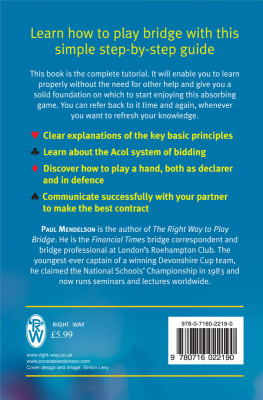
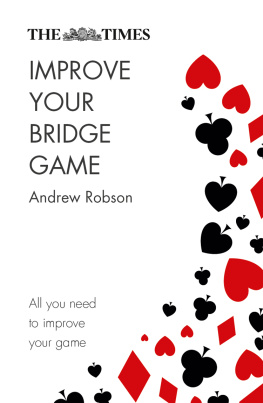
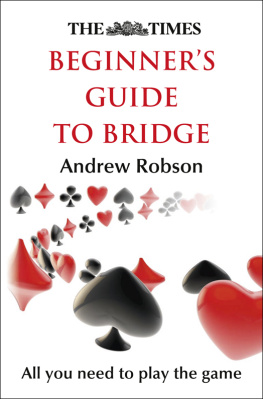

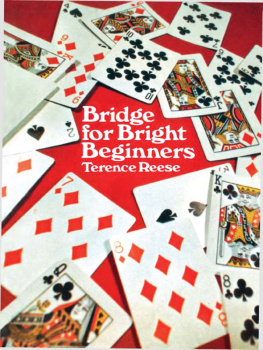
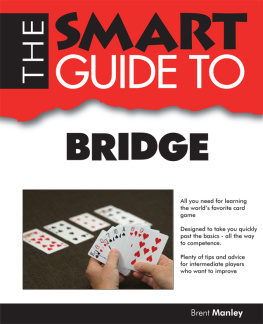

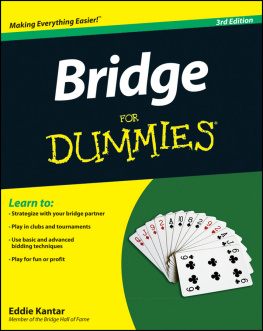
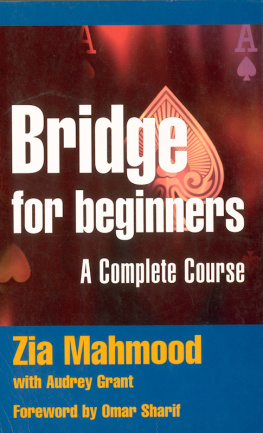
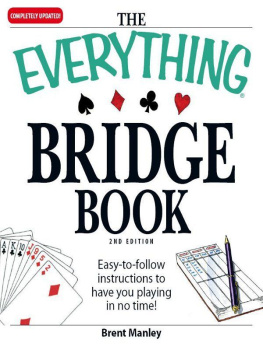
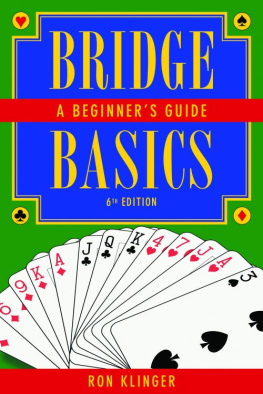
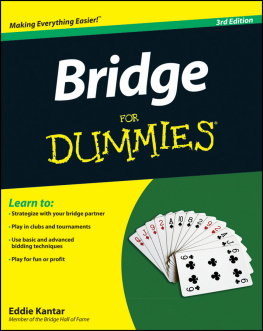




 The object of the game is to win TRICKS.
The object of the game is to win TRICKS.


